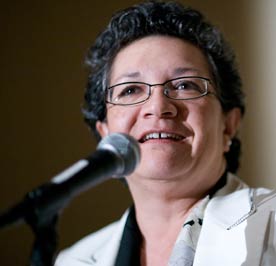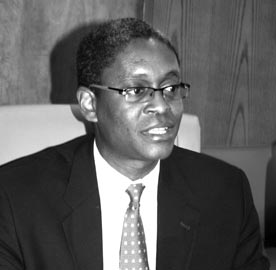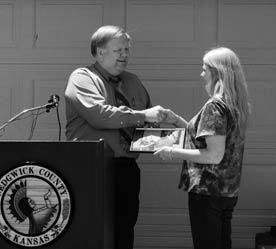A lot of the community-based organizations that are doing homeownership have found that they have inventory that they can’t move. And so, as a stopgap, they’re doing scattered site rental. Is there NSP support for the cost of that long-term maintenance?
NSP is one tool. Those same local governments have other dollars that could be used, and that’s important in terms of leveraging, and something that we’re encouraging in NSP and everywhere else. People talk about “I do just CDBG,” or, “I do just HOME,” or, “I do just public housing.” No, we do housing.
In NSP, what’s available to you? Section 8 vouchers, public housing capital, CDBG, HOME, tax increment financing, tax credits . . . So if we all decide, “I can only do it with NSP,” then we’re not being flexible. We’re not being innovative.
One of the main important features of a new HUD is a commitment to understanding that technical assistance is about a lot of things beyond compliance: “Do you know how to underwrite for your conditions? Do you know what it is that gets you the most housing for the least amount of public subsidy? Do you know when it’s time to partner and under what conditions?”
When we approach people in a professional way with data, with a hand that is truly open, and with no judgment, and say that we want to help you do better based on what is happening in your community, people are receptive.
This is such a different way of thinking than previous HUDs. How do you institutionalize this so that the older way doesn’t become the default in six years?
I think there are a number of ways to do that. One, the data doesn’t lie. [It’s] very important that we constantly be committed to providing better data, time-sequenced, not just once every two years, every five years, but things that are constantly made available as more information is available.
One thing that’s key to institutionalizing is embracing the people you work with. We have had disinvestment in the federal workforce and in local government for a long time, decades. You cannot simply say to people, “You should have been doing this” if we haven’t made sure that they get trained, if you don’t make sure that you include them, if you don’t celebrate together.
Every Tuesday morning, we all looked at the NSP data. Everybody knew what was going on. Conversations immediately happened: “Do we need to make a move in that community?” “Go talk to that TA provider.” “How is that working?” And you couldn’t tell the difference in that discussion whether someone was a political appointee or a civil servant. All we cared about is helping our constituencies. We celebrated it as a complete team, everyone thrilled, everyone hugging, everyone high-fiving.
Part of what you just described is a function of leadership, not institutions. What about institutionalizing for when you have a different set of leaders?
Let me give you an example. We’re working right now, here in CPD, on moving into the next phase of technical assistance. Instead of putting out NOFAs for CDBG, for HOME, for homeless programs, we have a NOFA, we’re calling it One CPD, that combines all of our pools of technical assistance. Underwriting is underwriting. You have to know it for a multifamily housing deal, for HOME, for CDBG, for HOPE VI. You could combine [TA] so that all of those teams are getting trained at the same time. Focusing on the skill sets that are important for success, as opposed to just compliance. That’s what we’ll institutionalize.
Nonprofit community development corporations have done a tremendous amount over 30 years, but there’s also been a critique of the CDC model. What do you see in terms of the capacity-building needs for nonprofit community development corporations?
Let me start by acknowledging that, in times of great difficulty and challenge with federal funding in years past, without nonprofits and philanthropy, communities would have struggled much, much more. So before we start talking about a change for them, I think we have to acknowledge and be grateful to their unbelievable contributions to our country.
Leverage has a lot of meanings. It’s not just about money. You have to leverage your relationships. You have to leverage opportunity. And that means that nonprofits also have to understand where’s the local investment going. Are you going to be able to build affordable housing along that [new transit] line and preserve values so that workers can get to work?
We’re all working on this together, leveraging what we have. Success is about that. The lone wolf strategy has its place, where you’re trying something new. But you have to have a balanced portfolio.
You mentioned affordable housing along transit corridors. How long is it affordable? Typically, it’s no more than required by subsidy restriction, 15, 30, maybe 40 years. But in some places, we’re seeing permanent affordability through models like community land trusst. A recent study showed there was almost a fifth of the prime mortgage rate of foreclosure in CLTs. Where do those kinds of models fit into the broader goals of CPD?
What we have to honor is that people get to choose. So if we at the federal level are conversant in all of these different options and understand the financing that it takes to get them done, that’s very important. I think what is very important for us is to lean forward, to not just be a receptor in terms of someone bringing an idea. “Tell me, do the regs allow me to do that?” We answer the question. But based on what they tell us their conditions are and the needs that they’re trying to fill, we could also say, “Have you also considered these other options?” Our job is to help to do that education without directing.
Tell us about your relationship with PD&R.
We don’t go anywhere without PD&R. We talk all the time about both evaluation and design. Can we get better data on this? Is there a faster way? When we started thinking about NSP2 and NSP3, immediately PD&R was invited to these discussions.
Very often when we’re working in really difficult places, even with the great work that’s been done, some streets just look bombed out and devastated. Where do you see our communities going in — not the short-term, but decades forward?
That depends on where they are and what their assets are. Housing plays a huge role in very challenged communities. It’s the first investor in to show faith. But I also think that we have to discover what a community’s assets are.
But we also have to be bold and not be afraid to say, “This community has lost 30 percent of its population over the last 40 years. What size should they be aiming at?” They have to decide that. That is a local decision about what neighborhoods you prioritize and how you prioritize them.
Cities and neighborhoods are always changing. If we think long-term about an asset, we design differently today so that in 30 years it could be useful for somebody else. Always think out, because the city will change right around you.
Thank you.






Comments